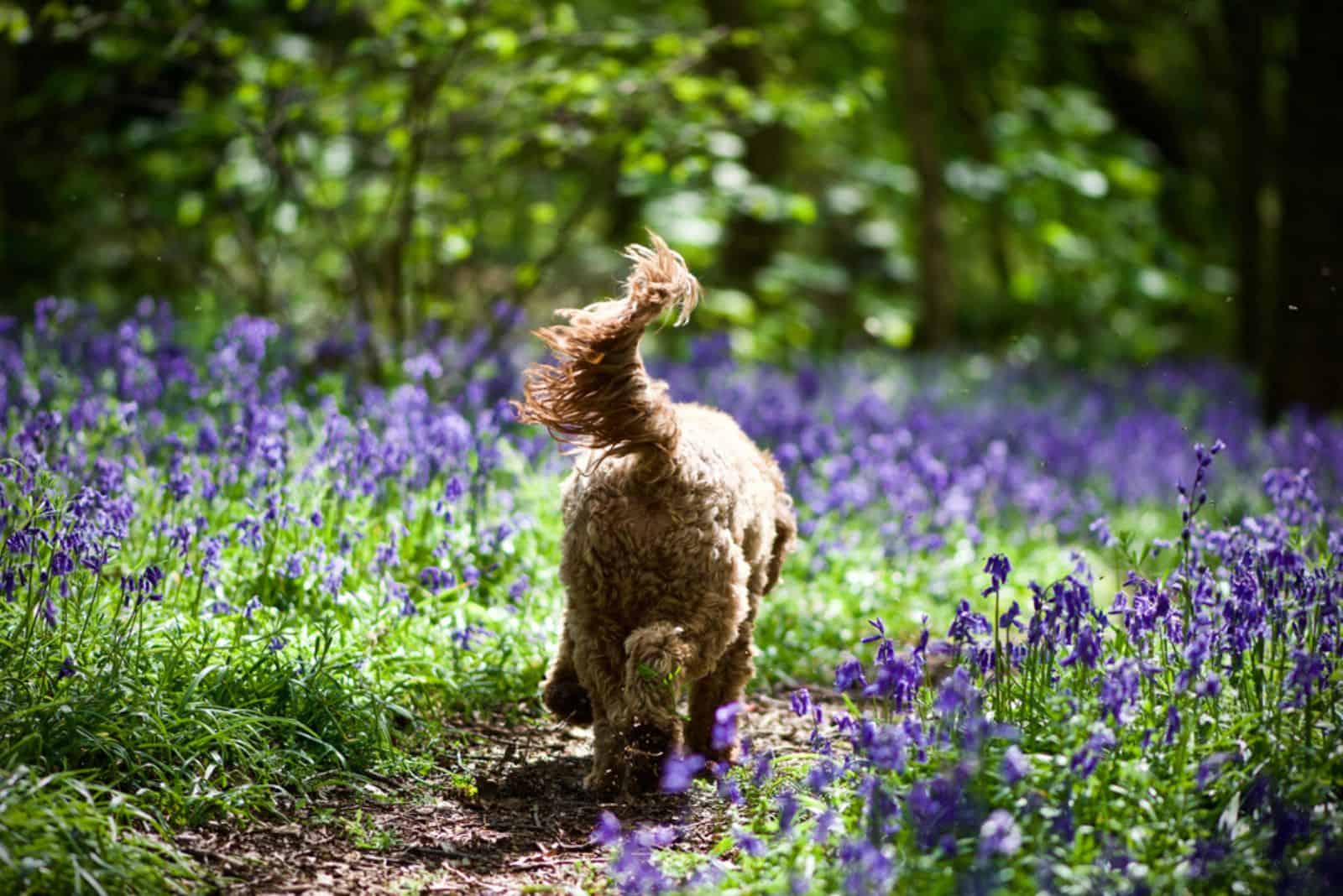Despite being an experienced dog owner, it is sometimes impossible to detect certain behavioral patterns in a dog. These animals of habit are often using their body language to communicate their deepest emotions or to reciprocate ours. But, why do dogs wag their tails?
Well, there’s no one answer to this question, really. Besides their ears, body posture, and vocalization, their tail is also an important tool for communication. Some breeds use it more than the others, but all in all – dogs tail to tell!
Tail wagging is not an uncommon behavioral standard in dogs. Our job today is to explain four main tail-wagging functions, as well as to list the most common tail positions that tell secrets. Hope you enjoy it!
Why Do Dogs Wag Their Tails
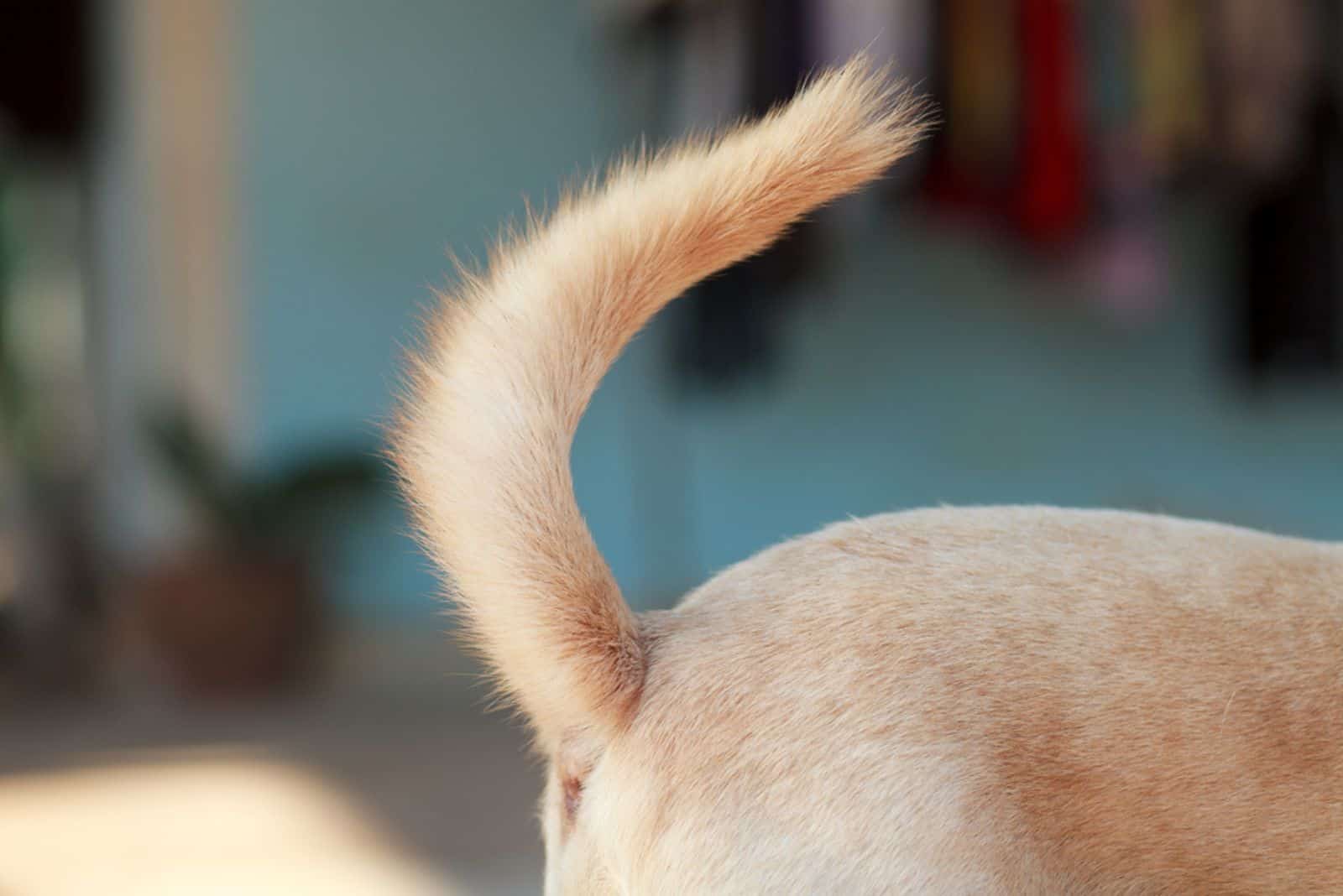
There are numerous quirky behaviors in dogs that you may or may not love. Some pooches stand on their owner to express happiness. Others lick their owner’s hands to show gratitude. And, some wag their tail! Why? Well, why not?
Tail wagging is one of the ultimate trademarks of all dog breeds. Most of the time, they use this communication tool to express their deepest happiness and joy, but tail wagging is related to other emotions, too.
In some rare cases, tail wagging is breed-related, and it doesn’t have anything to do with conveying emotions. Certain dogs wag their tail during a walk as that is just their natural body movement.
But, what are the other reasons for this quirky behavior? Here’s the list of the four most common tail-wagging triggers that might help you understand your dog better.
Greeting
Slight, smooth tail movement once they see their owner is a clear indication of a dog’s greeting. This is not only related to the best family dogs that have a special bond with their owner, but to all dog breeds in general.
Dogs wag their tail as the initial greeting movement when approaching their loved ones.
You must’ve seen this cute phenomenon a million times – you call your boy by its name and cute tail wagging is what you get in return… alongside a big, beautiful smile and body wiggling, of course.
Happiness
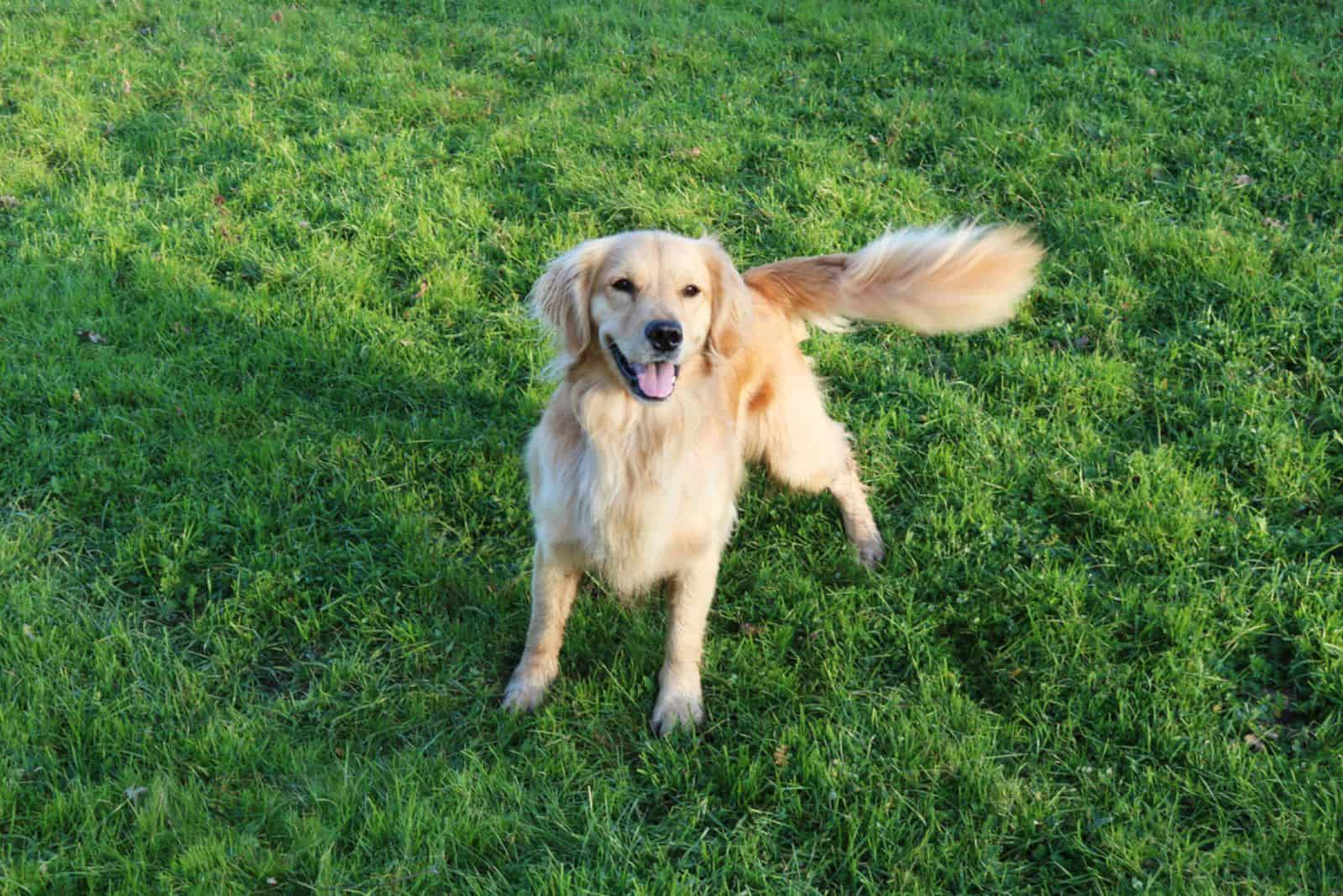
Dogs don’t only lay their head on you or lick your hand when they are happy. They also wag their tail! In fact, big-time tail wagging is a result of the deepest happiness in dogs in ninety-nine percent of the cases.
This is an instinctive movement that almost all dogs use. It is developed throughout the first several weeks of their life, and it lasts until their very last day.
In order to detect this phenomenon as an expression of happiness, you need to look into other accompanying signs. A happy face, tongue stuck out, body wiggling, and general euphoria are visible alongside happy tail wag.
Attention Seeking
Even though this phenomenon is rare, the “why do dogs wag their tails” mystery can be rooted in a clingy dog, too. How come?
Well, some highly intelligent dogs are true masterminds when it comes to attention seeking. Subconsciously or intentionally, they use their most approved and praised behavior to get their owners’ attention.
For instance, if you have always petted your happy, tail-wagging dog, and showed it a lot of attention in the past – there’s a good chance that the dog will remember this kind of approval and use it for further manipulation.
That’s right! Some extremely clingy dogs, such as Chihuahuas or Labs, do anything in their power to get as much attention from their owner as possible. If tail-wagging is your weak spot – don’t worry, hooman! Here it comes!
Nervousness Or Insecurity
Well, some pooches might wag their tail as a sign of nervousness or insecurity. This is one of those times when your dog happens to be on the crossroad between aggression and fear of being hurt.
Dogs that lack socialization or aggressive breeds by nature may use this odd phenomenon to communicate their insecurity to unknown people.
Despite the fact that they, indeed, want to be petted or approached, they still express a certain amount of aloofness by wagging their tail.
In order to avoid this sort of behavior, the best you can do is socialize your dog from an early age. This way, you will avoid unpleasant situations and outbursts, and at the same time, boost your puppy’s self-confidence in large groups of people or in public spaces.
What Are The Other Tail Positions That Convey Emotions?
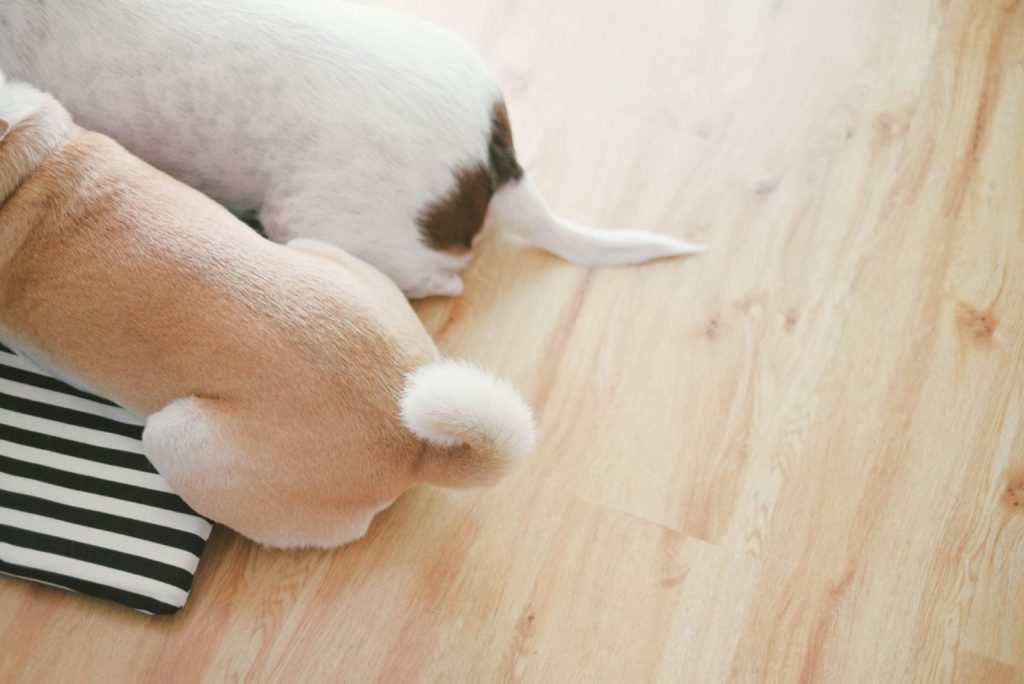
That’s right! Tail wagging is not the only thing pooches do with their furry rudder. There are other tail positions that the majority of dogs use to communicate their other emotions.
Tail tucked between legs; vertical, erect tail; freezed tail; lowered tail; and neutral tail are probably the most popular tail positions that indicate a certain behavioral pattern.
Still, in order to detect your dog’s tail signal – you need to look into other accompanying signs, such as the dog licking your hand, arching its back, freezing in place, and so on.
Tail Tucked Between Legs
Tail tucked between legs is a clear indication of potential aggressiveness in a dog. The majority of pooches use this body language posture to scare off their enemies or predators.
On the other hand, dogs use this tail position at times of deepest insecurity and anxiety. Puppies that suffer from severe separation anxiety may have their tail tucked between their legs a lot more often than their relaxed and well-parented counterparts.
A tail tucked between legs is almost never a good sign, which is why you need to revisit your parenting methods as soon as you notice this unusual behavior.
Vertical Tail

Some breeds have a natural, vertical tail that doesn’t necessarily indicate a particular emotion. Other breeds, though, use their vertical tail at times of utmost alert.
A vertical tail in dogs generally means aggression and threat. This is a natural, instinctive behavior that dogs use to scare off their enemies, and to warn them that they’re about to attack.
On the other hand, some pooches use a vertical tail to assert their dominance, even towards their owner. This, however, is more related to dominant dog breeds that are naturally aggressive.
Lastly, a vertical tail in a dog can be rooted in a deep fear or phobia. Many dogs use aggression as a self-defense mechanism, which is why a traumatized dog is much more likely to attack than a trauma-free dog.
“Frozen” Tail
There are several reasons why dogs freeze their tail all of a sudden. First off – this kind of behavior can be rooted in the fact that your puppy wants to be left alone.
Have you ever tried petting your tail-wagging dog, and all of a sudden, your dog freezes? Well, that could be a polite warning to leave them alone as they don’t enjoy cuddling anymore.
This behavioral pattern is related even to the least aggressive dogs in the world as it represents the ultimate body language.
On the other hand, a frozen tail can be an indication of a deep fear or stress. Traumatized dogs tend to freeze in the middle of some activity due to stress or deep phobia.
This usually happens in loud environments or in a new environment that your dog is still not used to.
Lowered Tail
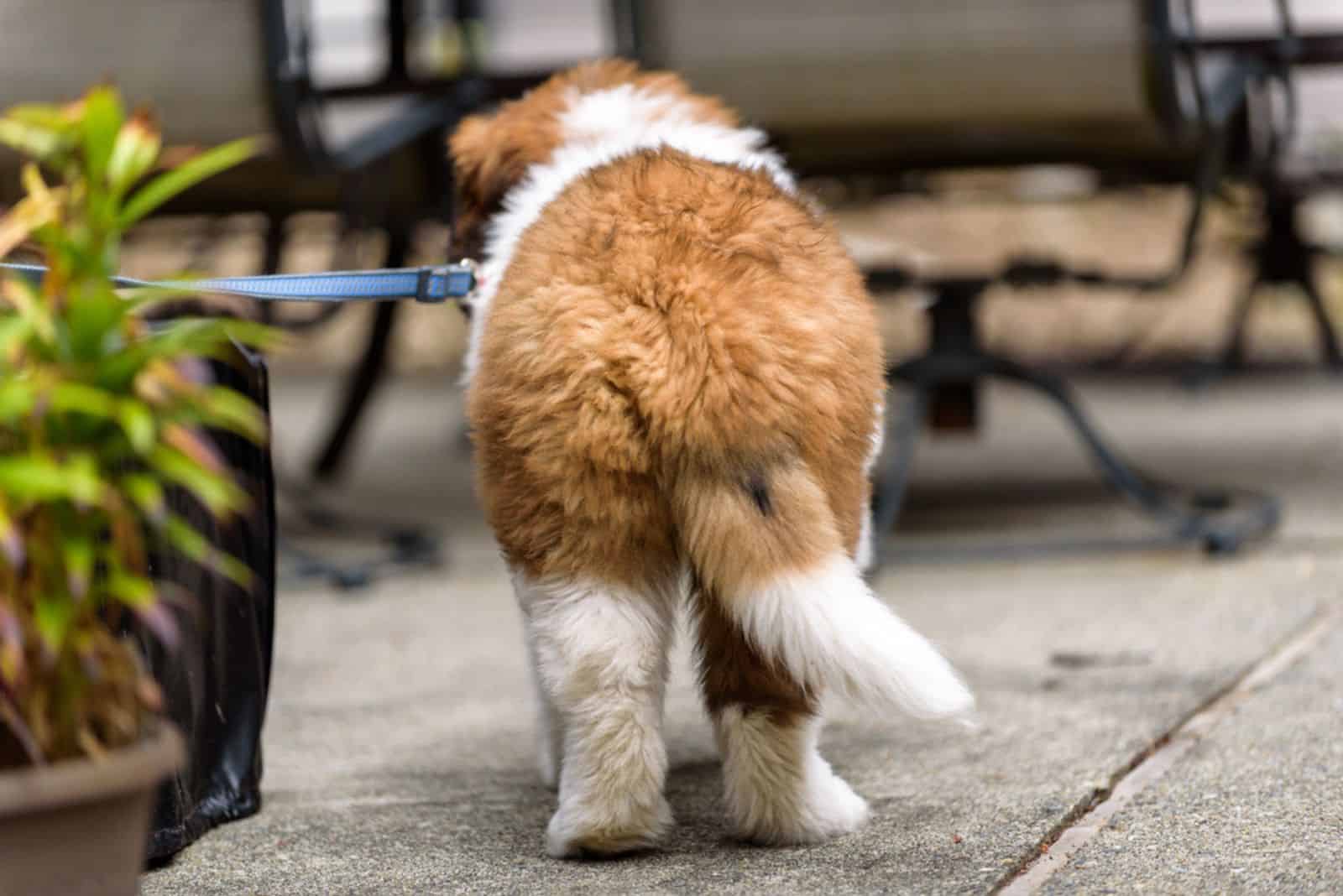
There are three different explanations for a lowered tail in a dog.
The first is related to depression. Puppies that suffer from some loss or severe depression tend to lower their tail almost to their hind legs. This is natural behavior for many dog breeds.
Furthermore, a lowered tail can be an indication of a disease or pain in a dog. However, this sort of behavior never comes without other accompanying symptoms.
Night restlessness, yelping, refusing to eat or drink, and lethargy are just some of the signs that your dog is not feeling well.
Lastly, some shy dog breeds often use a lowered tail to express their deepest insecurity when they are in a new environment or among new people.
A Tail In A Neutral Position
A neutral tail in dogs is a favorite for all dog owners! This tail position indicates that your dog is relaxed, comfortable, and self-confident.
If your puppy has a neutral tail, which is at the level of the back – you’re doing everything right! A relaxed dog will often sleep between your legs, seek your presence, and feel comfortable among all people.
This level of self-confidence is often related with well-implemented socialization training.
Conclusion
The “Why do dogs wag their tail” phenomenon never comes with one answer. Generally, this behavioral pattern is complex, and it can be related to several emotions, such as happiness, insecurity, or nervousness.
Reading your dog’s tail position can help you detect your dog’s general behavior, and revisit your parenting methods.
On the other hand, neglecting your dog’s tail position in certain situations can lead to misunderstanding, behavioral outbursts, and possibly aggression.
Read more: Is Your Dog Refusing To Walk? Here’s What You Can Do To Help
